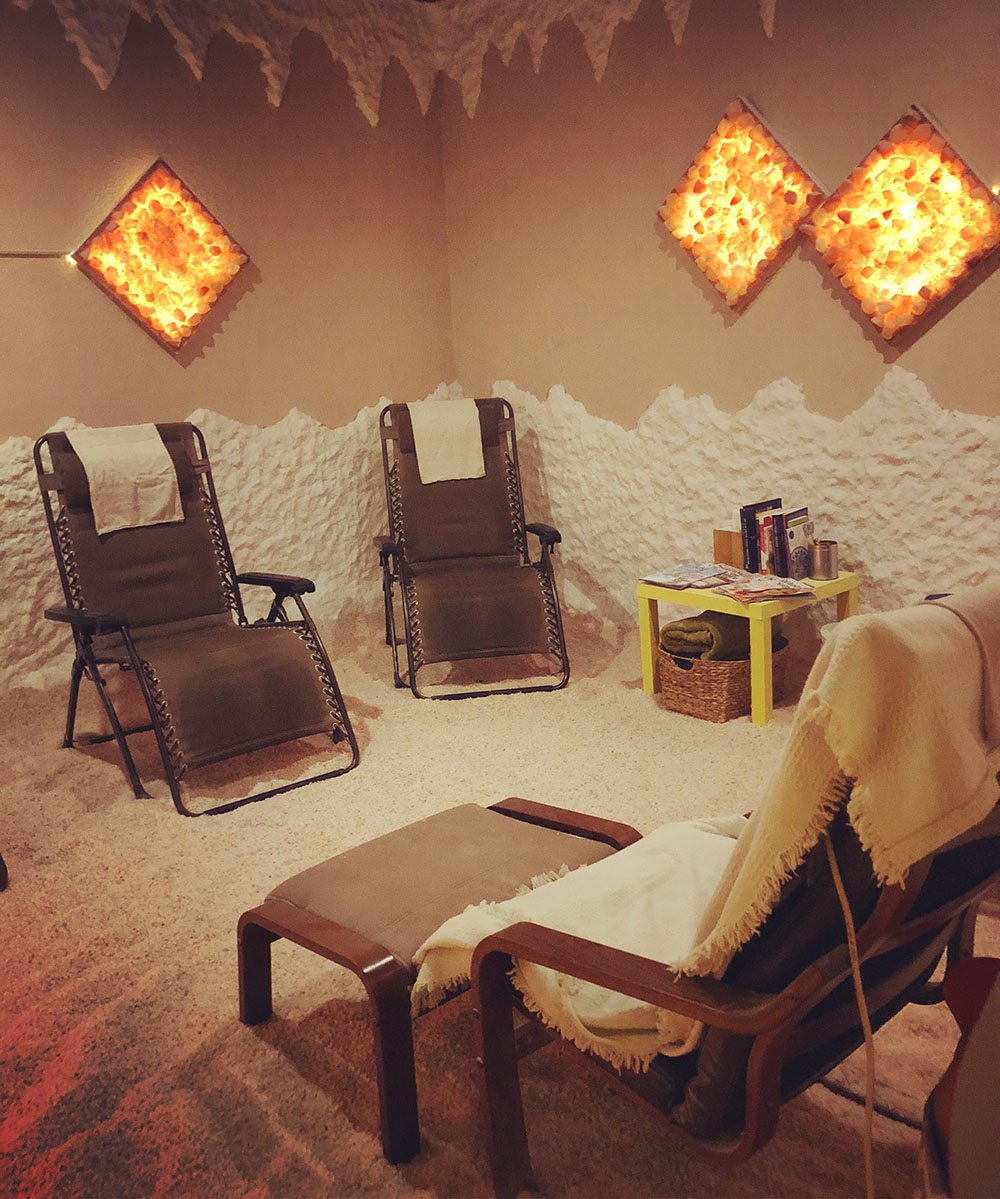The Benefits of Halotherapy
Halotherapy (salt therapy) has been in practice for more than a century.
Halotherapy (aka salt therapy) dates back more than 150 years, originating from the salt mines and caves of Eastern Europe. A man by the name of Dr. Feliks Boczowski noticed that the workers who were mining the salt rarely had any respiratory issues and had great skin, which ultimately led to him open the first health resort facility at the Wieliczka Salt Mine in Poland in 1839.
In the 1950s, Eastern European physicians learned how to simulate the natural conditions of salt caves, which ultimately led to modern-day salt therapy. We chatted with Diana Leone, owner of The Salt Studio in Pasadena, California, who shares the various health benefits of halotherapy and answers some frequently asked questions:
Himalayan salt lamps are frequently used as part of salt therapy.
What are some of the benefits of halotherapy?
We lead busy lives and are constantly bombarded with Wi-Fi, which affects our bodies, stresses out our systems, and results in a buildup of positive ions in our bodies—which sound like they’re a good thing, but they’re not. Negative ions, which are invisible charged particles in the air, are abundant in nature—especially around waterfalls and at the beach. Being in a salt room helps counteract the positive ions created by unnatural things that we’re encountering every day, so relaxation, grounding and getting back to our more peaceful state is the number one benefit that everyone can use for sure.
When done right before allergy season or when going into cold and flu season, salt therapy actually stimulates white blood cell activity and immune function within the lungs, so it can work preventatively as well. Many people suffer from long-term coughs that can linger for three to four months after a cold and become chronic. It’s caused by a deep dryness in the lungs, and the salt particles are very fine, so when we breathe them deeply into the lungs, they can reach those deep dry spots. The salt draws moisture from the air into those deep places, so we’ve seen amazing results in those with lingering dry coughs.
The salt particles also have positive effects on the blood micro-circulation of the skin, reduce inflammation, and can kill bacteria and fungi that are present with many skin conditions. Salt therapy can relieve itching while nourishing and moisturizing affected areas, and is great for those suffering from psoriasis, among other skin conditions.
How often should one engage in halotherapy and for how long?
If they’re treating a symptom or condition, at least twice a week. It’s safe to do daily. I have several people who do it weekly or monthly as maintenance. Our salt room sessions last 45 minutes, but you can leave earlier. The research-based benefit is shown to be 20 minutes, so anything beyond that is for relaxation.
Do you have any suggestions for enhancing one’s experience in a salt room?
I usually will recommend normal breathing mixed in with occasional slow, deep breaths from the nose and mouth. Knowing some additional breath-work techniques or meditation is an added benefit. We play relaxing music and provide books, magazines and coloring books for guests to use—whatever helps you to relax is best. Some people fall sleep. In the past, I’ve recommended meditation apps, but we now don't allow electronics because we really want to preserve the atmosphere and give people a break from any distractions.
Is halotherapy safe for all ages?
It’s recommended for ages one and up. The children that come in to treat asthma or other respiratory issues are doing really well, and use salt therapy as maintenance. It’s also safe to do during pregnancy—you’re not ingesting the salt, so it’s not going to affect your blood pressure. Many women get pregnancy-related congestion, and salt therapy helps treat that gently.
The salt room at The Salt Studio in Pasadena, California.
How long does it take to see improvement in one’s condition(s)?
One session will definitely give you relief, especially in chronic cough cases or in severe inflammation of psoriasis or eczema. You might notice a greater lung capacity and openness when breathing.
Is there a preferred time of day to experience halotherapy?
You can do it anytime of day—whenever you can fit it into your schedule. Some people prefer to do it first thing in the morning, while others prefer to do it at the end of their day. Guests have told me that they sleep better as a result of the salt therapy.
What are salt rooms made of?
The salt on our walls is pure sea salt, the floor is Himalayan salt, and we also have Himalayan salt lamps which are light features that emit negative ions.
Are salt lamps a good form of halotherapy?
Salt lamps are great to have in your bedroom, office or other space as a secondary form of salt therapy. The effects will not be as strong, but they certainly help contribute to a negative ion atmosphere and promote relaxation. I advise keeping them out of moist environments like bathrooms, as the salt will dissolve over time.
Anything else that we should know?
Try to avoid toxic environments and exposure to things like cigarette smoke and construction. Drinking lots of water is always a good idea—just like you drink extra water after a massage to flush toxins, it's the same with salt therapy.
For more information, visit The Salt Studio’s website and follow them on Instagram: @thesaltstudio
Kamala Kirk is a University of Southern California graduate and has been an editor/writer for more than a decade. She has written for E! Online, Total Beauty, TravelAge West, Malibu Times Magazine, and many more. She resides in Los Angeles and is a proud pug mom. Follow her on Instagram: @kamalakirk




